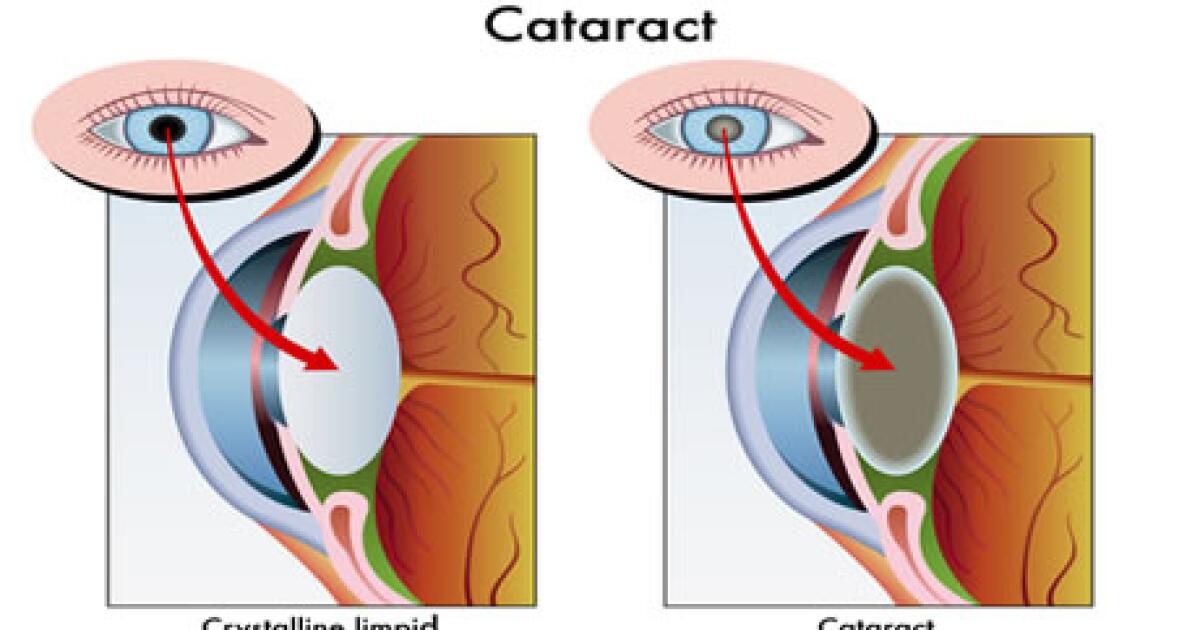This condition can be detected during an optical. In fact, seeing halos around lights is one of the most common symptoms of cataracts.
What Causes Halo In Eyes, Sometimes it’s a response to bright lights, especially if you wear glasses or contact lenses to correct nearsightedness, farsightedness or astigmatism. Common eye problems that can cause halos and glare include:

Cloudy vision and halos can generally be caused by anything that interferes with light entering the eye, including hazy glasses or contact lenses. Seeing halos around lights is a result of diffraction, an effect that occurs when the light bends while entering the eye. Multifocal replacement lenses are more likely to. These include watering or tearful eyes, overuse of contact lenses, cataracts and opacities in the vitreous humour.
When the lens becomes cloudy, light is dispersed.
5.4k views reviewed >2 years ago. The cause of haze, fog, and haze is diffuse light that diffuses as a result of lens fibers or foamy degeneration of epithelial cells. Halos appear as bright circles around light sources and are expected at. Some surgical procedures can cause you to see halos, especially at night. Also see starbursts around lights. Some prescribed medicines may also cause you to see haloes, including digoxin and chloroquine.
 Source: verywellhealth.com
Source: verywellhealth.com
Seeing halos around lights at night or glare from the headlights of oncoming cars is often caused by refractive errors. The symptoms and possible related eye conditions/diseases in this section are for general reference only, and do not contain all visual symptoms or all possible related conditions or diseases. These include watering or tearful eyes, overuse of contact lenses, cataracts.
 Source: drmotwani.com
Source: drmotwani.com
Eyes can become red, dry, irritated and sensitive to light, causing you to see halos. Many other conditions can cause you to experience haloes. Common eye problems that can cause halos and glare include: Halos occur when any of the light rays entering your eye get scattered on their path to the retina (the seeing part of the eye). Halos.
 Source: scientificanimations.com
Source: scientificanimations.com
This causes the bright light to appear as if it is surrounded by a ring of light, known as a halo. Sometimes it’s a response to bright lights, especially if you wear glasses or contact lenses to correct nearsightedness, farsightedness or astigmatism. Also see starbursts around lights. Corrective eye procedures, such as lasik can also produce halos as a side.
 Source: herbalpicnic.blogspot.com
Source: herbalpicnic.blogspot.com
Chlorine is irritating enough on its own, but bacteria left from bugs, environmental factors and fellow swimmers can also make its way into your eyes and cause irritation. When the lens becomes cloudy, light is dispersed. Halos appear as bright circles around light sources and are expected at. Halos and glare can also originate in the retina, the thin lining.
 Source: tonteraslight.blogspot.com
Source: tonteraslight.blogspot.com
One of the symptoms of advanced diabetic retinopathy is halos around lights, which occur due to a distortion of vision from the damaged retinal vessels in the back of the eye. The cause of haze, fog, and haze is diffuse light that diffuses as a result of lens fibers or foamy degeneration of epithelial cells. Which means your eyes don’t.
 Source: healthfully.com
Source: healthfully.com
Photokeratitis (sunburn like condition that should resolve on its own) when to worry Some prescribed medicines may also cause you to see haloes, including digoxin and chloroquine. In fact, seeing halos around lights is one of the most common symptoms of cataracts. Eyes can become red, dry, irritated and sensitive to light, causing you to see halos. 5.4k views reviewed.
 Source: startsat60.com
Source: startsat60.com
Seeing halos around lights is a result of diffraction, an effect that occurs when the light bends while entering the eye. Which disease in the eye is characterized by clouding of the lens which causes blurring or hazy vision and problems with night vision? Glaucoma occurs when the optic nerve becomes damaged due to elevated pressure within the eye, and.

Seeing halos around lights at night or glare from the headlights of oncoming cars is often caused by refractive errors. The cause of haze, fog, and haze is diffuse light that diffuses as a result of lens fibers or foamy degeneration of epithelial cells. Common eye problems that can cause halos and glare include: Glares appear as rings around bright.
 Source: ehow.com
Source: ehow.com
Which means your eyes don’t refract or “bend” light correctly. Halos appear as bright circles around light sources and are expected at. Cloudy vision and halos can generally be caused by anything that interferes with light entering the eye, including hazy glasses or contact lenses. Also see starbursts around lights. Glaucoma occurs when the optic nerve becomes damaged due to.
 Source: pinterest.com
Source: pinterest.com
Halos and glare can also originate in the retina, the thin lining in the back of the eye. Cataractsa cataract is a clouding of the eye’s natural lens. When the lens becomes cloudy, light is dispersed. Some surgical procedures can cause you to see halos, especially at night. Monofocal iols with a decentered diffractive design can cause halos when they.
 Source: southernidahoeye.com
Source: southernidahoeye.com
The symptoms and possible related eye conditions/diseases in this section are for general reference only, and do not contain all visual symptoms or all possible related conditions or diseases. Cataracts usually develop slowly and are most often seen in older people. Cataracts usually develop slowly and are most often seen in older people. Seeing halos around lights at night or.
 Source: drjockers.com
Source: drjockers.com
If you notice a sudden appearance of halos around lights, along with a headache, vomiting,. Pathologies that change its shape (like keratoconus, dystrophies, etc) or its transparency (like fuchs’ corneal dystrophy, cicatricial leukoma, trauma, etc) can cause halos. There are many eye conditions that can cause this to happen. This can be caused by a number of different things. Eyes.
 Source: safesight.co.za
Source: safesight.co.za
Monofocal iols with a decentered diffractive design can cause halos when they are used. The cause of haze, fog, and haze is diffuse light that diffuses as a result of lens fibers or foamy degeneration of epithelial cells. There are many eye conditions that can cause this to happen. Seeing halos around lights at night or glare from the headlights.
 Source: millennialeye.com
Source: millennialeye.com
Side effects of eye surgery include vision loss, halos of light, glare, double vision, dry eyes, and more. This condition causes a milky white film to appear over your eyes and may change the way your eye coloring appears. Halos appear as bright circles around light sources and are expected at. Other symptoms that may accompany cataracts are blurred vision,.
 Source: decoratingspecial.com
Source: decoratingspecial.com
The cause of haze, fog, and haze is diffuse light that diffuses as a result of lens fibers or foamy degeneration of epithelial cells. Side effects of eye surgery include vision loss, halos of light, glare, double vision, dry eyes, and more. Also see starbursts around lights. This happens when you have an astigmatism, nearsightedness, or farsightedness. Photokeratitis (sunburn like.
 Source: decoratingspecial.com
Source: decoratingspecial.com
Halos around lights are caused by diffraction, or bending of the light entering your eye. When light bends as it enters your eye — called diffraction — your eyes perceive that halo effect. Cataracts usually develop slowly and are most often seen in older people.when the lens becomes cloudy, light is dispersed abnormally as it enters the eye and causes.
 Source: eyetique.com
Source: eyetique.com
Dry eyes can lead to an irregular surface of the eye and scattering of light, causing you to see halos. The symptoms and possible related eye conditions/diseases in this section are for general reference only, and do not contain all visual symptoms or all possible related conditions or diseases. Halos appear as bright circles around light sources and are expected.
 Source: decoratingspecial.com
Source: decoratingspecial.com
Seeing halos around lights is a result of diffraction, an effect that occurs when the light bends while entering the eye. The symptoms and possible related eye conditions/diseases in this section are for general reference only, and do not contain all visual symptoms or all possible related conditions or diseases. Chlorine is irritating enough on its own, but bacteria left.
 Source: shellysavonlea.net
Source: shellysavonlea.net
Halos and glare can also originate in the retina, the thin lining in the back of the eye. Halos and glare can be caused by eye problems that keep the eye from properly focusing light onto your retina (the thin lining located in the back of the eye). This condition can be detected during an optical. Which disease in the.
 Source: epainassist.com
Source: epainassist.com
One of the symptoms of advanced diabetic retinopathy is halos around lights, which occur due to a distortion of vision from the damaged retinal vessels in the back of the eye. Astigmatism is a common eye problem causing blurry vision, difficulty seeing details and eye strain headaches. When light bends as it enters your eye — called diffraction — your.
 Source: pinterest.com
Source: pinterest.com
Astigmatism is a common eye problem causing blurry vision, difficulty seeing details and eye strain headaches. Halos appear as bright circles around light sources and are expected at. When the lens becomes cloudy, light is dispersed. This condition can be detected during an optical. Sometimes it’s a response to bright lights, especially if you wear glasses or contact lenses to.
 Source: iflscience.com
Source: iflscience.com
An eye md (ophthalmologist) can help. Seeing halos around lights at night or glare from the headlights of oncoming cars is often caused by refractive errors. When light bends as it enters your eye — called diffraction — your eyes perceive that halo effect. Which means your eyes don’t refract or “bend” light correctly. When light bends as it enters.
 Source: anonhq.com
Source: anonhq.com
Halos around lights and diabetic retinopathy. There are many eye conditions that can cause this to happen. Cataractsa cataract is a clouding of the eye’s natural lens. These include watering or tearful eyes, overuse of contact lenses, cataracts and opacities in the vitreous humour. That being said, it is critical to protect your eyes during a swim.
 Source: lancashireeyeclinic.co.uk
Source: lancashireeyeclinic.co.uk
This condition can be detected during an optical. Which disease in the eye is characterized by clouding of the lens which causes blurring or hazy vision and problems with night vision? This condition causes a milky white film to appear over your eyes and may change the way your eye coloring appears. This can be caused by a number of.
 Source: omeg2020.com
Source: omeg2020.com
When light bends as it enters your eye — called diffraction — your eyes perceive that halo effect. During the surgery, the eye doctor removes your cloudy lens and usually replaces it with an artificial lens. If light can’t focus properly on the retina, you may begin to see halos and glare. When the lens becomes cloudy, light is dispersed..








